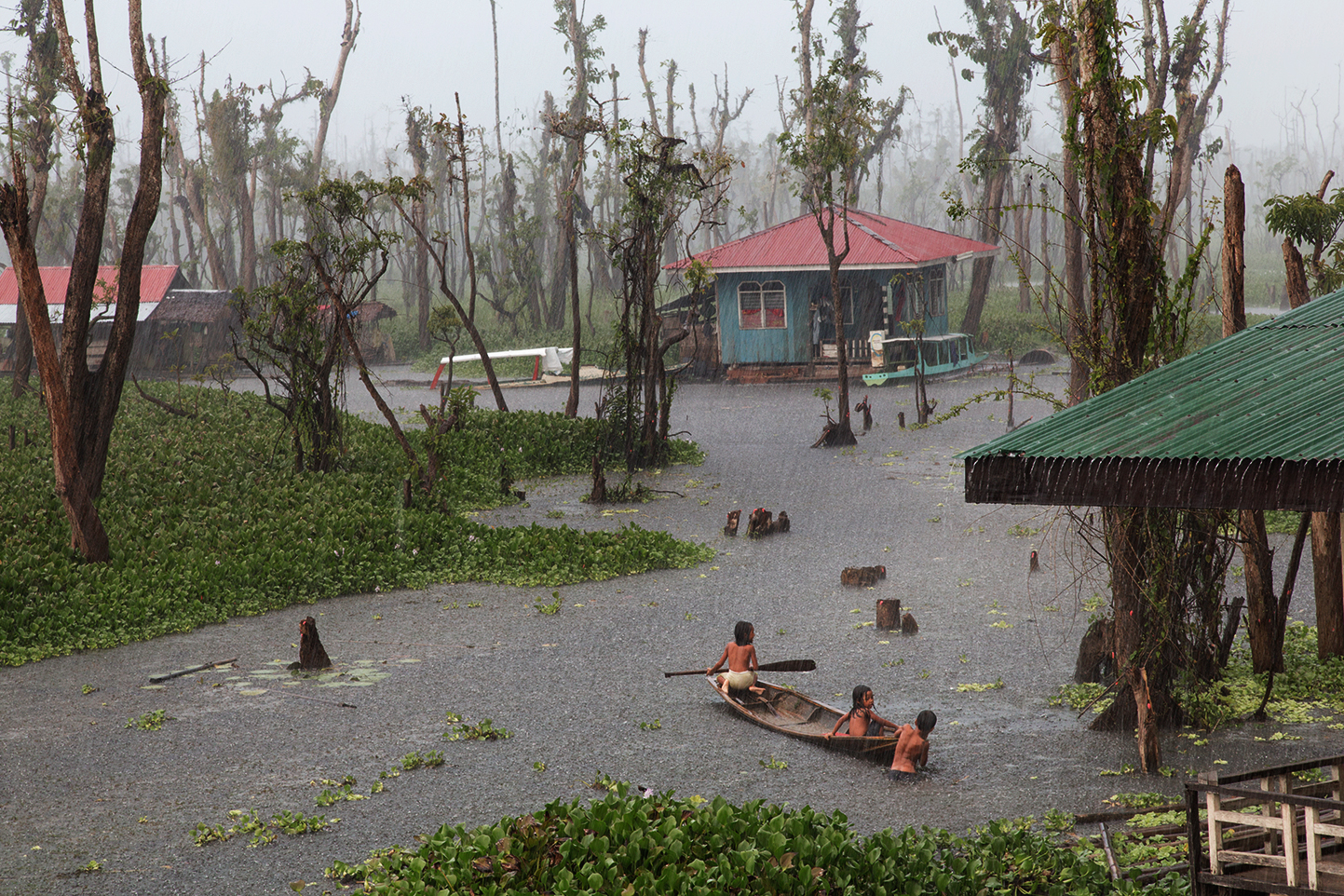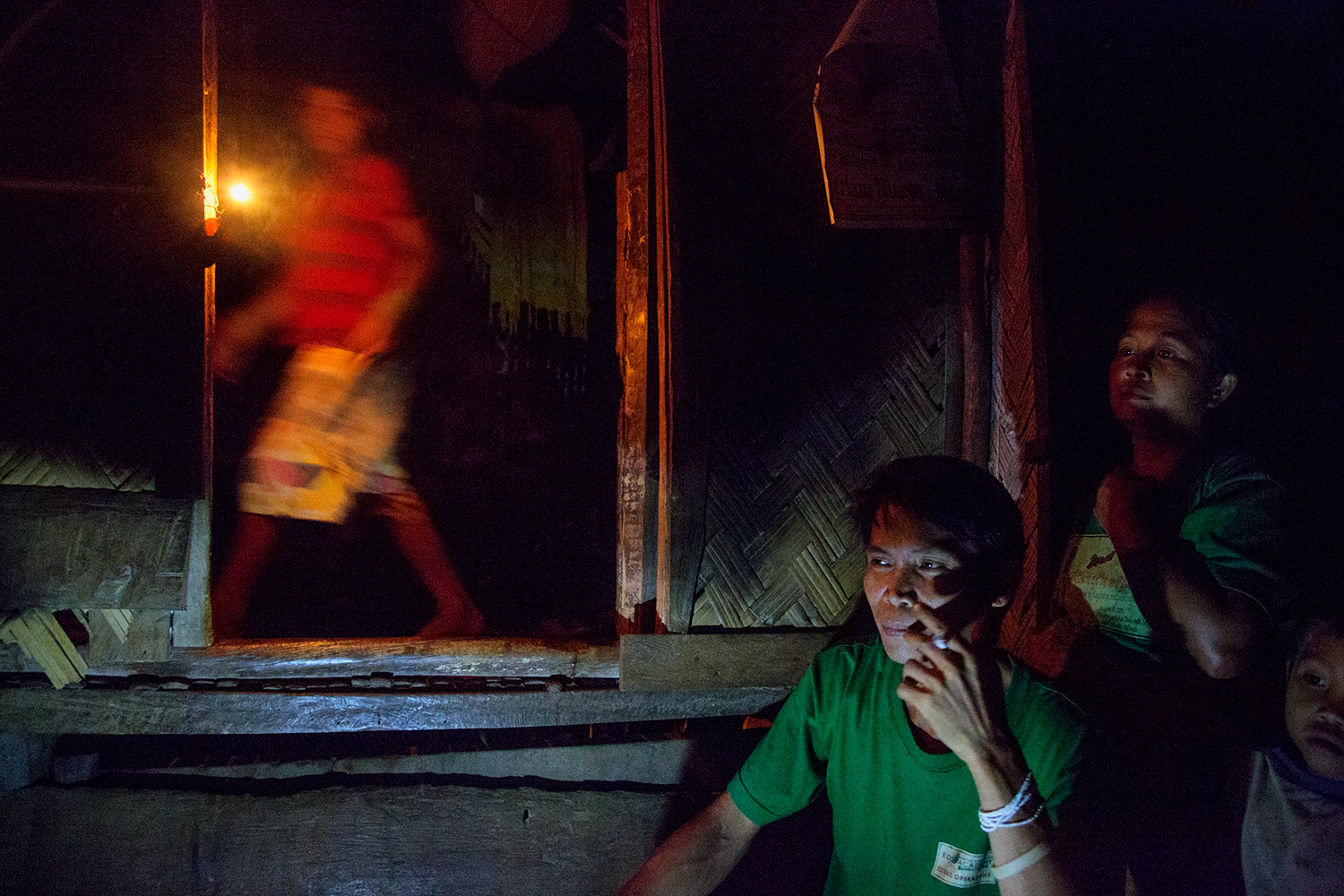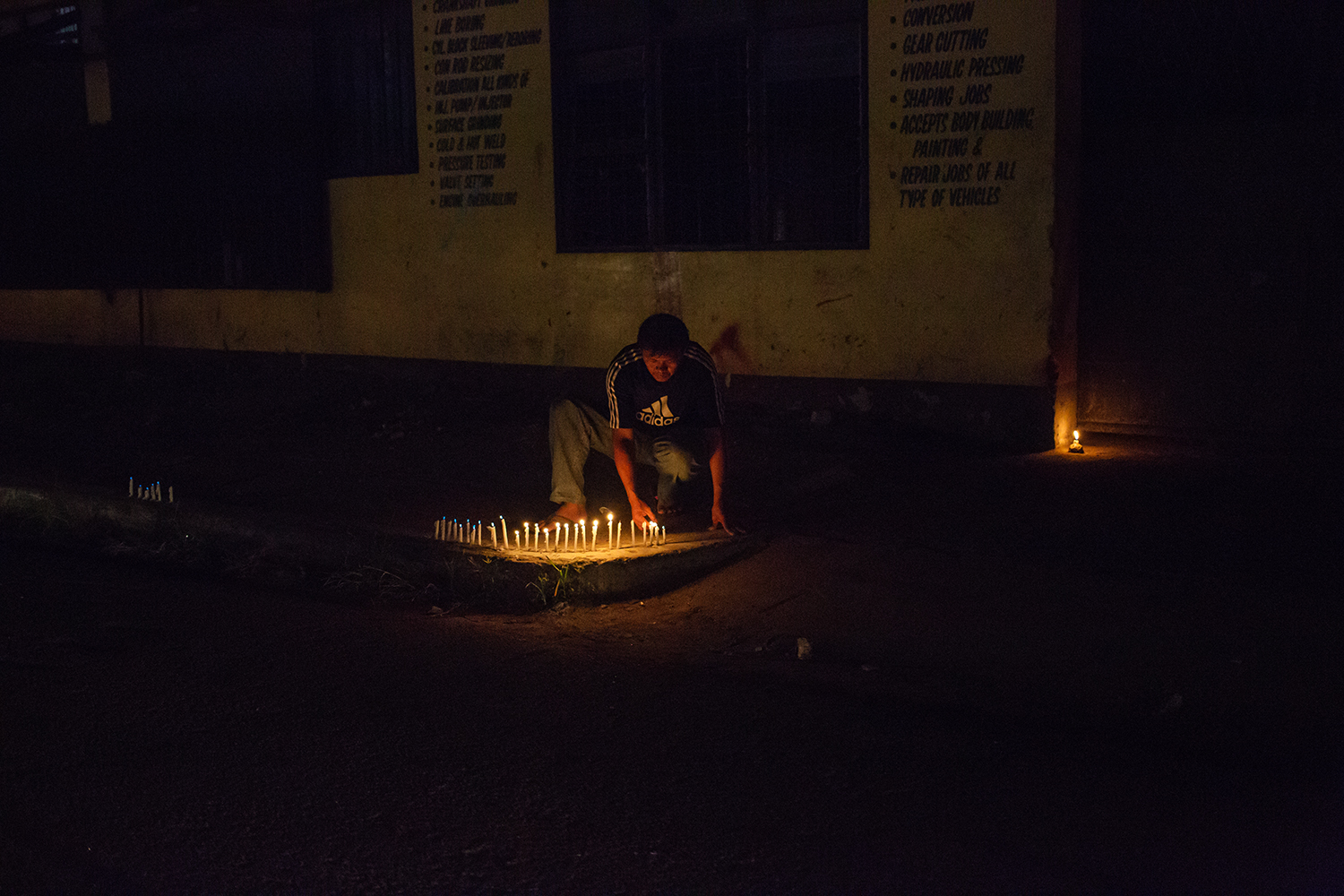
Children play in the ruins of a building in the tent village near San Jose airport, Tacloban City, Leyte in the Philippines on November 8, 2014 one year after the destruction of the landfall of Typhoon Haiyan.

A house ripped in half by Typhoon Haiyan in the Coron Island group, Northern Palawan in the Philippines.

Coron Island, Northern Palawan in the Philippines. The ancestral domain of the Tagbanua people. Currently the Tagbanua of Coron Island have ancestral claim not only on the territory of Coron Island but also in the surrounding waters, rich in biodiversity.

The main jetty on Coron Island in Northern Palawan, the Philippines destroyed by the storm surge from Typhoon Haiyan in 2013.

Children play in the waters around the floating village in an unexpected midday rainfall in Agusan Marsh in Mindanao, the Philippines.

A woman from the Monobo community of Agusan Marsh washes the family dishes outside her home at sunset in the floating village.

A young Monobo boy guides his canoe through an unexpected rainfall in a community floating village in the middle of Agusan Marsh, Mindanao in the Philippines.

A Tagbanua elder walks home after meeting with aid groups and the Coron Island committee helping to distribute aid to indigenous communities cut off from help after Typhoon Haiyan in the Philippines.

A woman and child sit on the front step of their floating home in the floating village in Agusan Marsh in Mindanao, the Philippines.

An Indigenous migrant from Culion living on Busuanga Island in Northern Palawan stands in front of a building leveled by Typhoon Haiyan in 2013.

A migrant from Culio living on Busuanga Island in Northern Palawan stands in front of her house that was destroyed by Typhoon Haiyan.

The sun sets in the Monobo floating village in Agusan Marsh in Mindanao, the Philippines.

A migrant living on Busuanga Island in Northern Palawan, the Philippines stands in front of his house that was partially destroyed by Typhoon Haiyan, he and other temporary residents living on the island had received no aid or assistance.

A young Tagnbanua boy looks out at Kayangan Lake on Coron Island, a popular tourist destination in Northern Palawan. The Tagbanua have ancestral domain rights on Coron and surrounding waters but they are at risk of development and pressure from the government who wish to profit from the popular tourist site.

Children play by the water, on a wall torn apart by Typhoon Haiyan in the tent city near San Jose airport, Tacloban Leyte.

Children play in a the skeleton of a boat wrecked by the storm surge that passed by Busuanga Island in Northern Palawan.

A family in the Tula-Tula community sit together in the light of a battery powered lamp and oil lamp outside their family home. In 2011 they were fighting against mining explorations in the area. Currently their area is safe but the issue of mining remains a major threat to their homelands.

People wait patiently in a traffic jam whilst construction continues on the bridge between Tacloban City and the San Jose airport, one year after Typhoon Haiyan made landfall in the Philippines.

A man lights candles for loved ones lost on the one year anniversary of the landfall of Typhoon Haiyan in Tacloban, Leyte, the Philippines.



















Children play in the ruins of a building in the tent village near San Jose airport, Tacloban City, Leyte in the Philippines on November 8, 2014 one year after the destruction of the landfall of Typhoon Haiyan.
A house ripped in half by Typhoon Haiyan in the Coron Island group, Northern Palawan in the Philippines.
Coron Island, Northern Palawan in the Philippines. The ancestral domain of the Tagbanua people. Currently the Tagbanua of Coron Island have ancestral claim not only on the territory of Coron Island but also in the surrounding waters, rich in biodiversity.
The main jetty on Coron Island in Northern Palawan, the Philippines destroyed by the storm surge from Typhoon Haiyan in 2013.
Children play in the waters around the floating village in an unexpected midday rainfall in Agusan Marsh in Mindanao, the Philippines.
A woman from the Monobo community of Agusan Marsh washes the family dishes outside her home at sunset in the floating village.
A young Monobo boy guides his canoe through an unexpected rainfall in a community floating village in the middle of Agusan Marsh, Mindanao in the Philippines.
A Tagbanua elder walks home after meeting with aid groups and the Coron Island committee helping to distribute aid to indigenous communities cut off from help after Typhoon Haiyan in the Philippines.
A woman and child sit on the front step of their floating home in the floating village in Agusan Marsh in Mindanao, the Philippines.
An Indigenous migrant from Culion living on Busuanga Island in Northern Palawan stands in front of a building leveled by Typhoon Haiyan in 2013.
A migrant from Culio living on Busuanga Island in Northern Palawan stands in front of her house that was destroyed by Typhoon Haiyan.
The sun sets in the Monobo floating village in Agusan Marsh in Mindanao, the Philippines.
A migrant living on Busuanga Island in Northern Palawan, the Philippines stands in front of his house that was partially destroyed by Typhoon Haiyan, he and other temporary residents living on the island had received no aid or assistance.
A young Tagnbanua boy looks out at Kayangan Lake on Coron Island, a popular tourist destination in Northern Palawan. The Tagbanua have ancestral domain rights on Coron and surrounding waters but they are at risk of development and pressure from the government who wish to profit from the popular tourist site.
Children play by the water, on a wall torn apart by Typhoon Haiyan in the tent city near San Jose airport, Tacloban Leyte.
Children play in a the skeleton of a boat wrecked by the storm surge that passed by Busuanga Island in Northern Palawan.
A family in the Tula-Tula community sit together in the light of a battery powered lamp and oil lamp outside their family home. In 2011 they were fighting against mining explorations in the area. Currently their area is safe but the issue of mining remains a major threat to their homelands.
People wait patiently in a traffic jam whilst construction continues on the bridge between Tacloban City and the San Jose airport, one year after Typhoon Haiyan made landfall in the Philippines.
A man lights candles for loved ones lost on the one year anniversary of the landfall of Typhoon Haiyan in Tacloban, Leyte, the Philippines.
